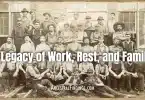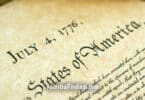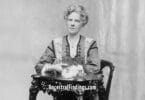Benjamin Harrison was the twenty-third President of the United States, serving from 1889 to 1893. A grandson of ninth US President William Henry Harrison, Benjamin is part of the only grandfather-grandson presidential duo in US history. His time as President came during a period of great change in the United States. It was not too long after the Civil War and during a period of the westward expansion of the country. He navigated it all with clarity, cleverness, and the delicacy some of it needed, and his time as President is considered by most to be a success.
Today, his old home serves as a historical site that is open to the public to honor him and teach subsequent generations about him. Here is what you need to know about the Benjamin Harrison Presidential Site.
Located in the Old Northside Historic District of Indianapolis, Indiana, the Benjamin Harrison Presidential Site is a stately house that was built in the 1870s. It has sixteen rooms and a red brick exterior. Harrison moved to Indianapolis twenty years before he built the house. When he did so, he constructed it on a double lot he bought at an auction, in what was then the outskirts of town. However, the Harrison family moving there began an exodus of other wealthy families to the north side of town, and it soon became a trendy area. Harrison lived in the house for the rest of his life, with the exception of his term as a US Senator from Indiana from 1881 to 1887 and as US President from 1889 to 1893.
During his presidential campaign, Harrison was well-known for giving campaign speeches to gathered crowds from the front yard of his house. These were later referred to as his “front porch” speeches, even though the front porch on the house was not built until 1896, three years after he left the White House. The same year Harrison built the front porch, he also renovated the house to include the new technology of home-based electricity. He died in the house in 1901 in an upstairs bedroom. The house is owned today by the Arthur Jordan Foundation and is used as a museum dedicated to Benjamin Harrison and his family.
Harrison’s widow, Mary Lord Dimmick Harrison, took ownership of the house after Harrison died, but sold it to the Arthur Jordan School of Music in 1939. She did so with the provision that the house would always be used as a memorial to her husband. The school renovated the house and made the second and third floors into dorms for its female students. The first floor was converted into a museum to Harrison. The house became a National Historic Landmark in 1966.
The school, which had been renamed the Arthur Jordan Foundation, renovated the house again in 1974, turning the entire thing into a house museum. The Foundation leases the house to the Benjamin Harrison Foundation (incorporated the year the house became a National Historic Landmark), which allows the group to operate the museum in the house.
The museum is open for tours every day, beginning at 10 am on Mondays through Saturdays and 12 pm on Sundays. It closes at 3:30 pm every day. Ten of the sixteen rooms in the house are open and available for guests to explore. Each of the open rooms is decorated in the Victorian style that was popular when Benjamin Harrison lived there. There are 3,700 pieces of memorabilia in the house that were owned by Benjamin Harrison and his family. There are also 2,440 books in the house, some of which were Harrison family items. An archive for the Daughters of the American Revolution is located there, as well.
The house offers a lot for visitors to see and do. In addition to it being a traditional museum, with the requisite gift shop, it is also home to the truly impressive Candlelight Theater. Candlelight Theater performs authentic plays from the 19th and early 20th centuries, such as Harrison and his family would have seen performed, and the Victorian décor of the house provides a realistic backdrop for these performances. The theater has a season every year and performs a selection of plays at the house each season.
Various special events are held at the house throughout the year, as well. They are always changing, but usually include things like garden parties and holiday celebrations, particularly for the Fourth of July. Civic organizations and philanthropic groups also hold events here for both the public and their members. Checking the website of the house is the best way to find out what events are going on at the house, and when.
There are carefully cultivated gardens around the house that are cared for year-round by nine gardeners, including a Master Gardener. The themes and colors of the gardens change according to each season, and the plants include both flowers and shrubs, as well as trees. There is even a lilac garden on the property, with lilacs that were first cultivated during the time that Benjamin Harrison was US President. Both passersby on the street outside the house and visitors to the museum can enjoy the beauty and a pleasing array of color that the gardens provide.
Space is available at the house for groups to rent for their own, private special events, as well. The Presidential Classroom and the gardens are both available as rental space and provide a beautiful location for both formal and casual events of all kinds.
In addition, the museum has permanent exhibits that are particular to the house, and rotating exhibits that are on loan from other locations. The rotating exhibits are usually themed to fit in with the time period of the house, or with the theme of US politics or presidents.
The Benjamin Harrison Presidential Site is a wonderful and beautiful place to visit for those who are interested in presidential history, those who love gorgeous old houses, and those who enjoy any type of museum.






